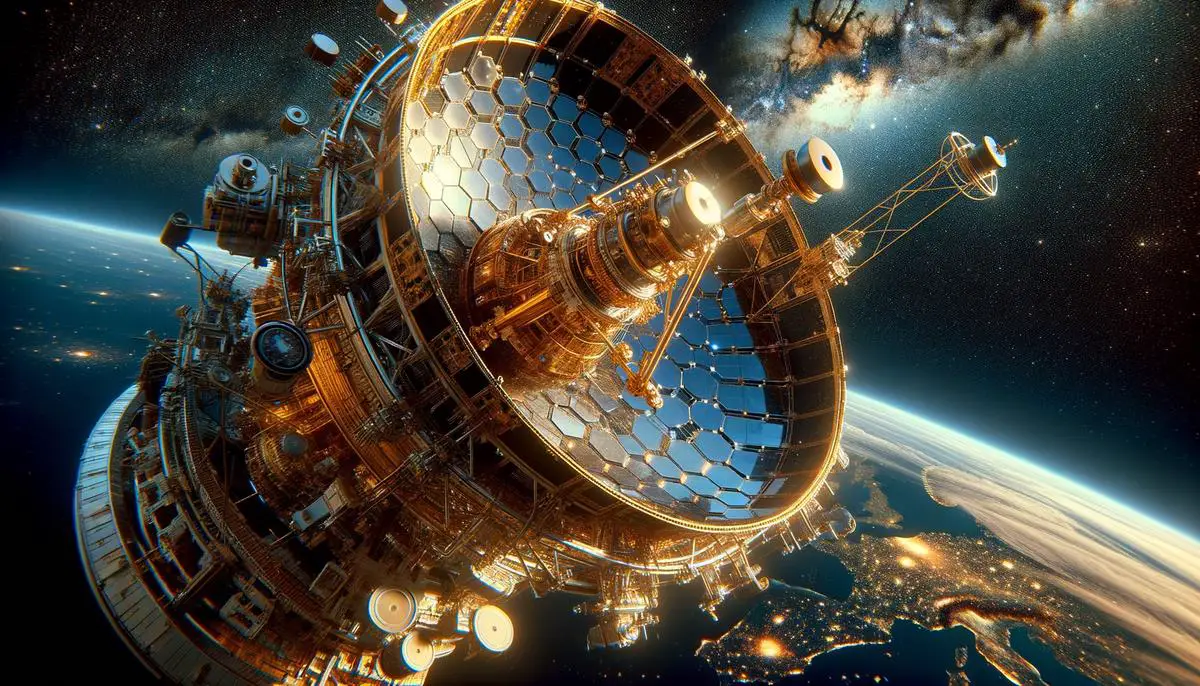The James Webb Space Telescope (JWST) is reshaping our understanding of the cosmos. From the early universe's galaxies to the atmospheres of distant exoplanets, JWST's observations are providing unprecedented insights. This article examines the telescope's groundbreaking discoveries, offering a comprehensive look at how these findings challenge and refine our knowledge of space.
Early Universe Galaxies
The James Webb Space Telescope (JWST) has unveiled the most distant galaxies ever observed: JADES-GS-z14-0 and JADES-GS-z14-1. These galaxies, observed about 300 million years after the Big Bang, challenge our understanding of galaxy formation.
The discovery of JADES-GS-z14-0 and JADES-GS-z14-1 by the JADES team suggests galaxies formed more quickly than most astronomers previously predicted. JADES-GS-z14-0, being both bright and large, challenges theories that expected a slower buildup of structures in the early universe.
Scientists at the Center for Astrophysics | Harvard & Smithsonian (CfA) used simulations that included interactions between gas and dark matter previously neglected. These models depicted small, yet incredibly luminous galaxies formed soon after the Big Bang.
JADES-GS-z14-0 shines with light from numerous young stars, casting doubt on earlier hypotheses about galaxy formation. If JWST continues to find more galaxies like these, it will force scientists to reevaluate their understanding of dark matter and its role in galaxy formation.
"The size of JADES-GS-z14-0 and its brightness are both surprising and exciting."
Harvard professor Daniel Eisenstein remarked. It signifies that vibrant galaxies could develop in the early universe faster than traditionally thought.
JWST's ability to observe these distant galaxies stems from its near and mid-infrared observations. The redshift of these light signals confirms their ancient origins, allowing astronomers to look back nearly 13.8 billion years when the universe was a mere 2% of its current age.
JADES-GS-z14-0 serves as evidence for the swift and intense formation of massive galaxies shortly after the Big Bang. This high luminosity results from young stars, suggesting bursts of star formation rather than a slower, gradual process.
These discoveries make it clear that our understanding of early galaxy formation needs reevaluation. Einstein's theories and cold dark matter models might require significant adjustments as more such galaxies come to light. The rapid formation of JADES-GS-z14-0 and JADES-GS-z14-1 illustrates the universe's proficiency in creating stellar bodies almost immediately after its inception.
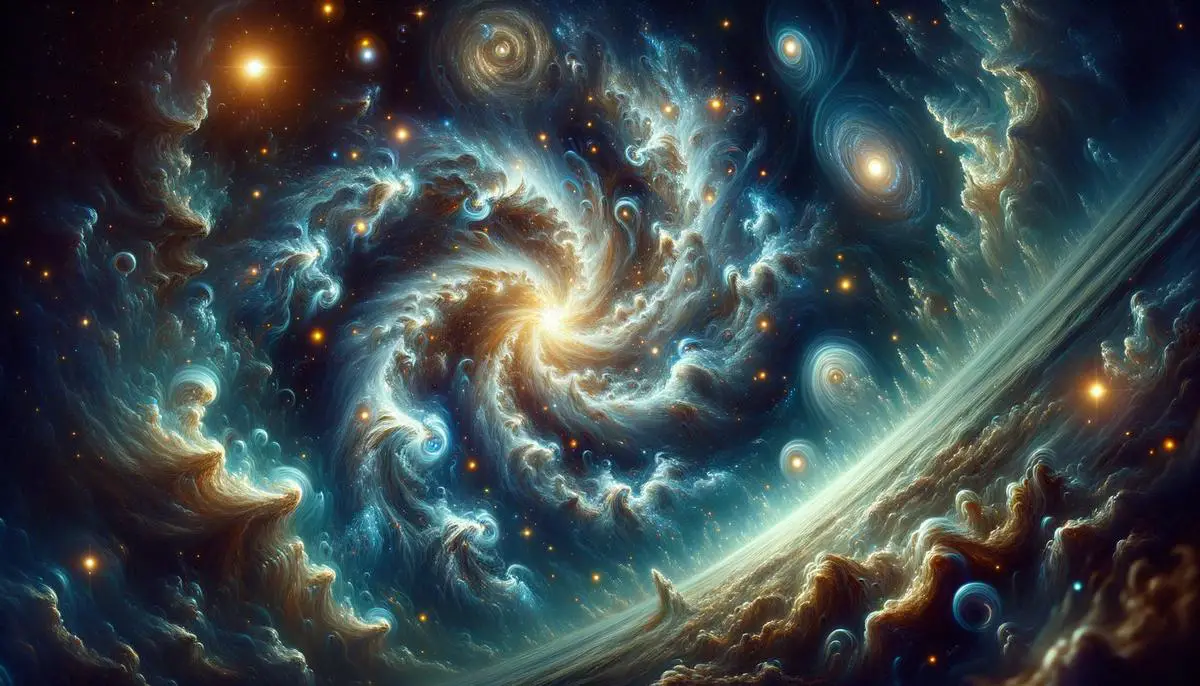
Exoplanet Atmospheres
JWST's advanced spectrographs are revealing unprecedented details about exoplanet atmospheres, providing critical clues about their potential habitability.
A milestone achievement is JWST's detailed examination of the atmosphere of WASP-39b, a gas giant located approximately 700 light-years from Earth. JWST's spectrographs identified carbon dioxide in WASP-39b's atmosphere, marking the first time this molecule has been found in an exoplanetary atmosphere. The presence of sulfur dioxide suggests photochemical reactions driven by the star's radiation.
While gas giants like WASP-39b are inhospitable, they provide a convenient laboratory for probing atmospheric chemistry due to their size and proximity to their host stars. JWST's focus is also shifting towards rocky, Earth-like exoplanets, such as those in the TRAPPIST-1 system.
Transit Spectroscopy
JWST employs transit spectroscopy to analyze exoplanetary atmospheres. This technique observes the light from a star as a planet passes in front of it, with the starlight filtering through the planet's atmosphere and absorbing certain wavelengths. By analyzing these absorption lines, JWST can infer the presence of specific molecules.
The potential habitability of an exoplanet depends on these molecular signatures. Water vapor indicates the possibility of liquid water, carbon dioxide plays a role in regulating planetary climates, and methane could signify biological processes.
As we continue exploring with JWST, each discovery adds to our understanding of planetary habitability. Through its unprecedented capabilities, JWST is expanding our knowledge of distant worlds and bringing us closer to potentially finding habitable environments beyond our solar system.
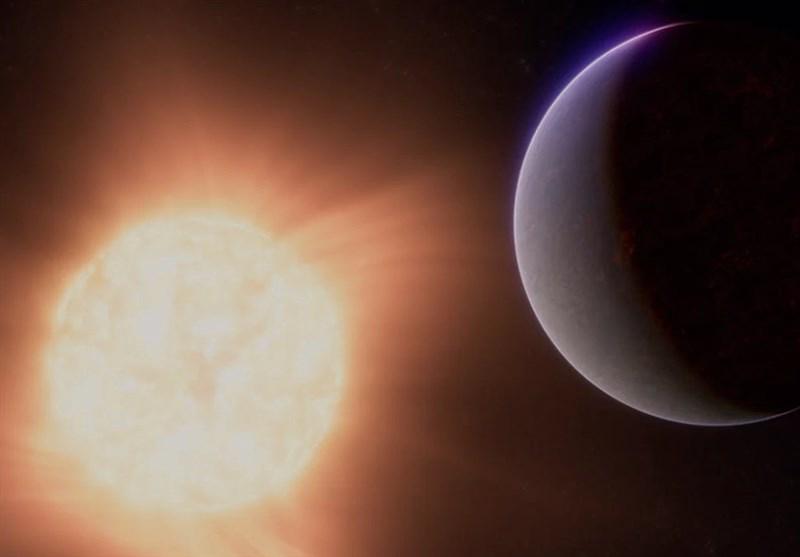
Potential Biosignatures
JWST has been examining K2-18b, a promising exoplanet, for signs of biosignatures, specifically dimethyl sulfide (DMS). This compound is intriguing because on Earth, it's produced predominantly by ocean-dwelling phytoplankton, potentially indicating biological activity on distant worlds.
In 2023, preliminary data from JWST suggested the possible presence of DMS in K2-18b's atmosphere, along with other potentially life-indicative molecules like methane and carbon dioxide. K2-18b receives solar radiation nearly identical to Earth and has a temperature conducive to liquid water, drawing parallels to a "Hycean" world—one with a hydrogen-rich atmosphere and water oceans.
However, confirming the existence of DMS on K2-18b remains challenging. The data, analyzed by researchers at UC Riverside, were not definitive due to the signal's overlap with methane. Computer models suggest that for DMS to accumulate to detectable levels, the planet would need a biological source producing it at 20 times the rate found on Earth.
Future Observations
The deployment of JWST's advanced instruments, set to capture more precise infrared wavelengths, may enable accurate detection of DMS in the future. Confirming DMS on K2-18b would be a significant advancement in astrobiology, demonstrating the capability to detect biosignatures light-years away.
The implications of such a discovery are substantial. It would not only affirm the potential for life on a planet vastly different from Earth but also expand our understanding of the conditions under which life can exist. This shifts the perspective from searching for Earth-like biomarkers to considering a broader spectrum, including hydrogen-based ecosystems.
- Adaptations in methodology
- Better understanding of exoplanetary atmospheres
- Exploration of diverse planetary systems
By refining our detection methods and expanding our biosignature frameworks, we're exploring the cosmos with JWST as our guide. Each finding, whether confirming or challenging initial hypotheses, brings us closer to revealing the universe's biological secrets and the potential discovery of life beyond Earth.
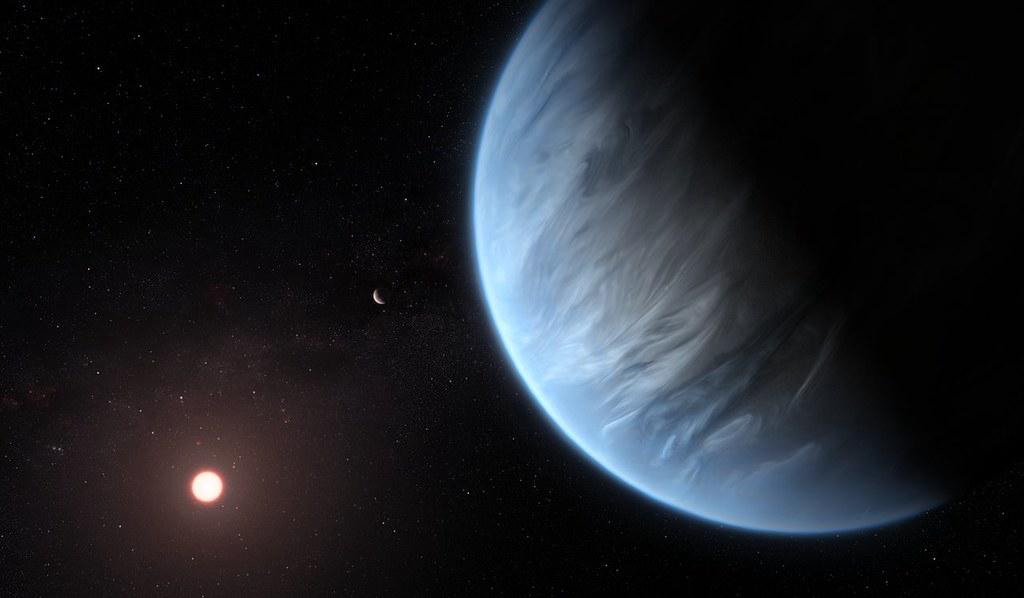
Star and Planet Formation
JWST has provided unprecedented insights into the birthplaces of stars and planetary systems. Its near-infrared imaging of the Pillars of Creation in the Eagle Nebula reveals numerous protostars—newborn stars previously hidden from view. These appear as red dots embedded within the pillars, each a gathering ball of gas destined to ignite nuclear fusion.
The Southern Ring Nebula, once thought to be a simple shell of gas expelled by a dying star, has shown complex structures under JWST's gaze. The nebula contains concentric ripples of gas and dust, evidence of interactions between the central white dwarf star and its binary system. JWST's mid-infrared imaging shows that the cool, dense regions around the white dwarf contain materials that can be recycled into future generations of stars and planets.
JWST's infrared capabilities allow it to see through dense clouds of gas and dust, crucial for studying not just individual stars, but also larger structures of star-forming regions within galaxies. By capturing the full lifecycle of stars, JWST provides a comprehensive picture of stellar evolution.
The telescope's observations also have profound implications for planetary formation. The process of stars aggregating material from their surrounding disks to form planets is now observable in unprecedented detail. These observations offer insights into the initial conditions that lead to different planetary system architectures.
Wolf-Rayet stars, such as WR 124, showcase the end-life of massive stars shedding their outer layers. This expelled material serves as building blocks for future stars and planetary systems, elucidating the cycle of birth, life, and death in the cosmic ecosystem.
Each discovery enriches our understanding of the universe, advancing our quest to comprehend the forces shaping our galaxy. As we continue our exploration with JWST, each revelation brings us closer to understanding the symphony of stellar and planetary formation, inspiring us to consider our place in this vast, changing cosmos.
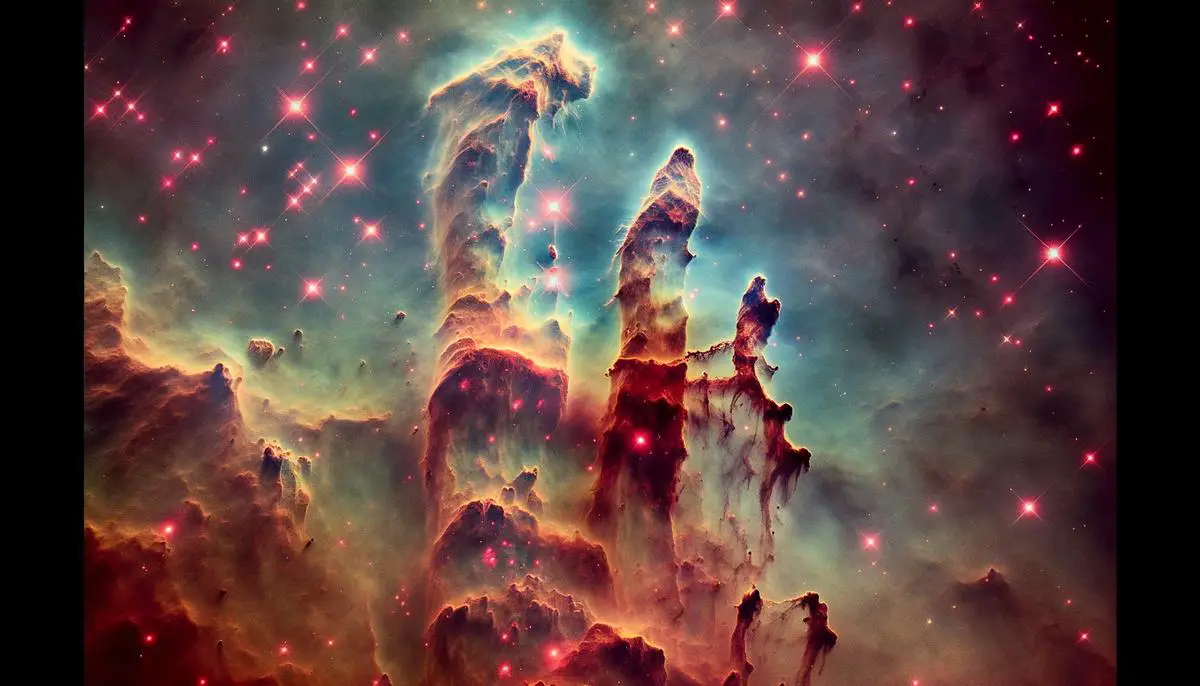
Dark Matter and Dark Energy
JWST's advanced capabilities are uncovering aspects of dark matter and dark energy, examining their behavior and implications in ways that could transform our understanding of the universe's fundamental makeup.
Dark matter, constituting about 27% of the universe, does not emit, absorb, or reflect light. JWST allows astronomers to observe its gravitational influence in unprecedented detail. By studying gravitational lensing—how light from distant galaxies is bent and distorted—JWST provides valuable clues about the distribution and density of dark matter.
The telescope captures highly detailed images of galaxy clusters, which act as giant lenses magnifying light from background galaxies. These images allow astronomers to map the "dark" mass responsible for the observed lensing effects, helping astrophysicists refine their models of dark matter distribution and interactions with visible matter.
JWST also explores how dark matter interacts within these clusters. By examining the dynamics of these cosmic structures, it can reveal subtle interactions that hint at dark matter's properties. Studying collisions between galaxy clusters can show how dark matter behaves in high-energy environments.
Dark energy, comprising approximately 68% of the universe, is theorized to be responsible for the accelerated expansion of the universe. JWST investigates this expansion by measuring the rate at which distant galaxies drift apart through precise measurements of redshift.
Understanding Dark Energy
- Examining the cosmic distance ladder
- Refining estimates of the Hubble constant
- Observing Type Ia supernovae as standard candles
- Tracing the universe's expansion history
JWST's ability to observe galaxies across a broad spectrum of redshifts enables scientists to trace the universe's expansion history. This allows them to test theories of dark energy and its evolution over time, addressing whether it's a constant force or varies with time and space.
As JWST continues to gather data, its findings will inform the next generation of cosmological models, integrating observations of dark matter's gravitational effects and dark energy's role in cosmic acceleration. Each discovery brings us closer to unraveling these cosmic mysteries, enriching our understanding of the universe's structure and fate.
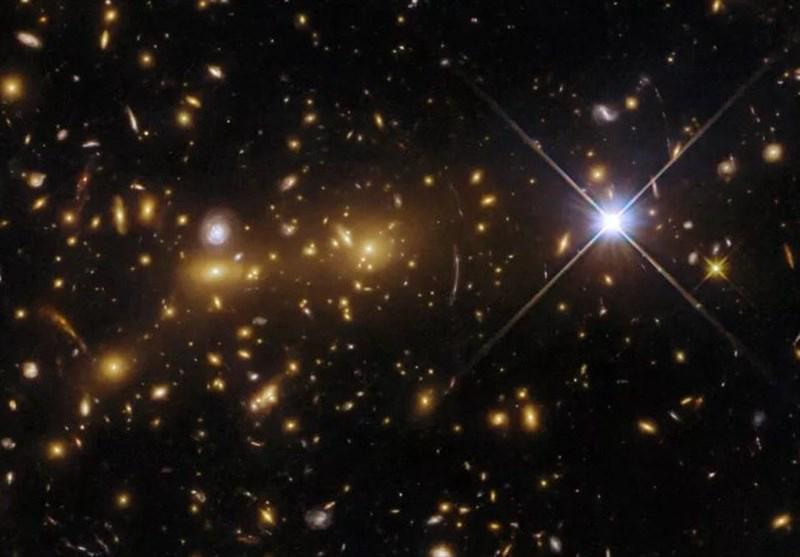
JWST's revelations are transforming our comprehension of the universe. Each discovery, whether it pertains to early galaxies, exoplanet atmospheres, or the enigmatic dark matter and dark energy, adds a crucial piece to the cosmic puzzle. As we continue to gather data, JWST promises to further illuminate the mysteries of our universe, bringing us closer to understanding its vast and intricate nature.
![]()
